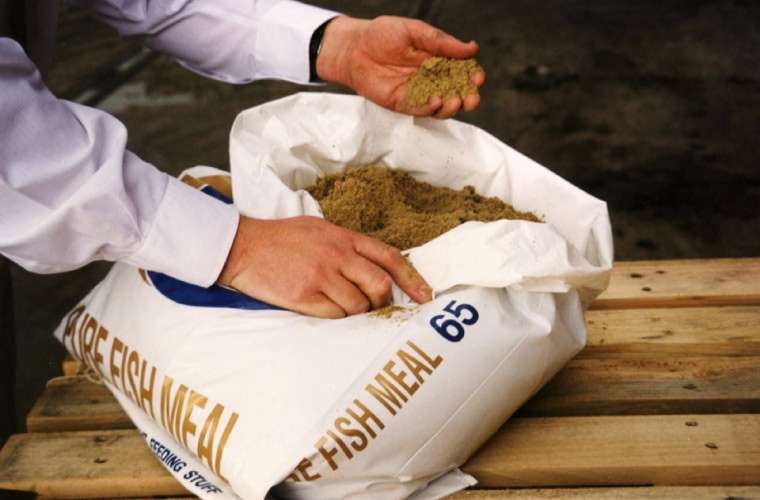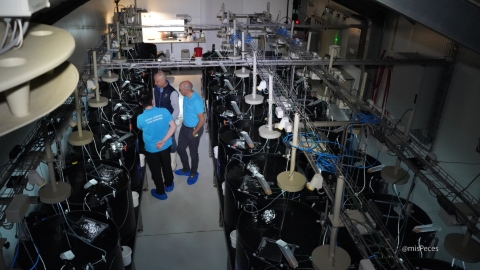
Globally, approximately 6 million tonnes of fishmeal and 1.2 million tonnes of fish oil are produced annually, according to the latest SOFIA report by the FAO. Of this total, around 27% of the fishmeal and 47% of the fish oil come from the utilization of fish by-products. In 2020, 16 million tonnes of fish were processed worldwide to produce fishmeal and fish oil.
Although this proportion has increased in recent decades-thanks to improvements in processing techniques and a more sustainable focus-there is still considerable scope for the marine ingredients industry to expand globally. This can be achieved by making better use of fishery and aquaculture by-products in countries such as Vietnam, Bangladesh, or United States, and other regions with less developed industrial infrastructure.
The potential of these by-products, as highlighted by a comprehensive analysis conducted by researchers from Johns Hopkins University, the University of Florida, and other international institutions, is significant. Their findings underline how greater utilization could impact environmental sustainability and drive the growth of aquaculture for feed-dependent species.
Fish by-products-including heads, bones, skin, and offcuts-make up between 40% and 60% of the weight of processed fish. For every tonne of by-products generated, yields vary depending on the species and the efficiency of the processing methods. On average, 180 to 250 kilograms of fishmeal and 50 to 100 kilograms of fish oil can be extracted from one tonne of by-products. The remainder-between 65% and 77%-is composed by water, non-usable solids, or secondary by-products, which can be repurposed for other industries, such as fertiliser production or energy generation.
These by-products offer a unique opportunity to produce high-value fishmeal and fish oil. However, full utilization is hindered primarily by a lack of infrastructure, weak regulatory framework, and high costs of transportation and processing. These challenges are especially pronounced in remote areas or regions with limited technological development.
There are, however, success stories. In Norway, 99% of salmon farming by-products are utilised, including 104,000 tonnes of dead fish annually and 296,000 tonnes of processing waste. These by-products are transformed into high-value marine ingredients, pet food, and cosmetics, demonstrating that investment in processing facilities and appropriate policies can lead to substantial improvements.
In contrast, Vietnam’s pangasius processing sector achieves a 48% utilisation rate, leaving 305,000 tonnes of mortalities unprocessed due to logistical barriers.
In the United States, outcomes are mixed. For instance, in the Alaska pollock fishery, 80% of by-products are processed, while 12% (around 217,000 tonnes) are discarded due to limited on-board processing capacity. Meanwhile, the Alaska salmon fishery, constrained by its seasonal nature, fails to process 63% of by-products in certain plants.
Greater utilization of fish by-products not only improves environmental sustainability, but also delivers substantial economic benefits. Converting waste into marketable products enables businesses to generate additional revenue and supports global food security by reducing competition between marine resources used for direct human consumption and those used in animal feed production.
In developing countries, where infrastructure is limited, establishing networks for the collection and processing of by-products could create new job opportunities, strengthen local economies, and contribute to environmental sustainability.
The transition to broader by-product utilisation is not just desiderable but necessary-and it has already begun. Its success will depend on coordinated efforts goverments, industry, and communities to overcome existing barriers, especially in countries with low utilization rates.
Aquaculture versus wild-captures fisheries: A comparison of Efficiency
The aquaculture sector is more efficient in utilizing by-products than wild-capture fisheries. According to the study, the aquaculture industry achieves an average utilization rate of 70% driven by its consistent production and larger industrial scale.
On the other hand, wild-capture fisheries achieve an average efficiency of 59%, hindered by short fishing season, remote locations, and permissive regulations that allow waste to be discarded. These disparities underscore the need for targeted investments to improve processing infrastructure and sustainability in the wild-capture sector.
If all fish by-products generated globally were fully utilised, the result would be an estimated production of between 1.44 and 2 million tonnes of fishmeal and 400,000 to 800,000 tonnes of fish oil.


